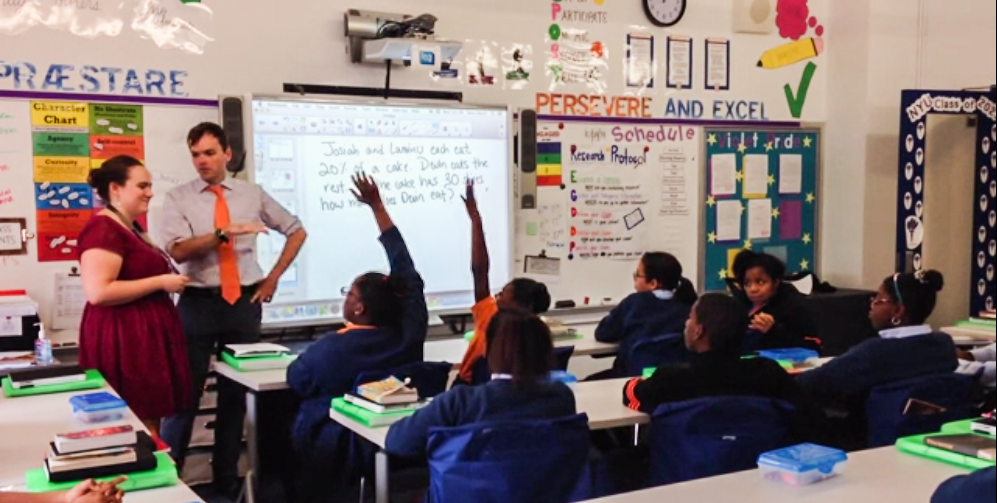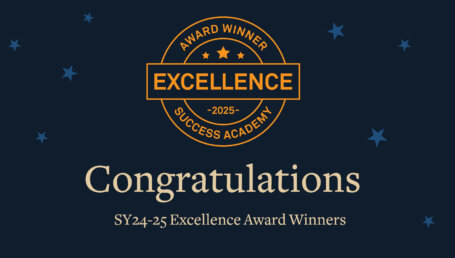
When I leave my office to begin a round of observations, I leave everything behind. No laptop, no tablet, no notebook, no pen. I won’t need any of those tools for the next hour, even though I will be hard at work. I’ll be listening to responses, studying work, asking questions, assessing mastery, and delivering feedback. But I can leave everything behind in the office because all of that work will happen alongside my teachers, in their classrooms, as they teach.
“In-the-moment” coaching is a hallmark of instructional leadership at Success Academy, and I have seen it work wonders for teaching and learning.
“In-the-moment” coaching is a hallmark of instructional leadership at Success Academy, and I have seen it work wonders for teaching and learning. Before joining Success, I taught elementary school in Mississippi, where I saw only one model of teacher development. It was a combination of silent observations and lengthy e-mails. When observation season rolled around, my principal or coach would slink into the classroom, take a seat in the back, open his or her laptop, and watch lessons for a whole period without saying a word. Later that day – or week – I would get a detailed e-mail describing my strengths and weaknesses, and laying out suggestions for my improvement.
That’s how observations went. I always took the feedback to heart, and I generally found it helpful (I needed all the help I could get!). So when I became an instructional coach, I managed teachers the same way. I observed intently with my laptop open, took copious notes on what teachers and students were saying and doing, typed furiously to create accurate “scripts” of each lesson, and crafted thoughtful and detailed e-mails to teachers. I offered what hoped would be clear and helpful feedback. This, I thought, was how you improved teacher practice.
Then I moved to New York, took a teaching job at Success, and discovered an entirely different – and entirely more effective – way to help teachers improve. It was a method that involved a lot of interrupting (how very New York, I thought at the time). My principal and leadership resident would interrupt my lessons all the time. They would offer more concise ways to give directions, then have me repeat them; they would listen to me ask a question, then whisper a more rigorous version of that same question in my ear; they would call me over to a desk to discuss a student’s essay as the student was writing.
These interruptions were startling, unapologetic, and fast-paced. They were also fantastic. In-the-moment feedback accelerated my teaching more quickly than I had thought possible.
These interruptions were startling, unapologetic, and fast-paced. They were also fantastic. In-the-moment feedback accelerated my teaching more quickly than I had thought possible. I better understood the context for my feedback; I could try implementing it right away; I could see the immediate impact of adjustments on student learning. I experienced real and refreshing growth.
This new “in-the-moment” method was unfamiliar, but the more I experienced it, the more sense it made. I knew from teaching – and from life – that people best improve their skills when they practice those skills in authentic settings. During a tennis lesson, for example, I expect the pro to correct my backhand immediately, not to share suggestions by e-mail later that day. If there’s a problem with the backhand (and trust me, there is), I want to know exactly what that problem is (right away), so that I can fix it (right away). Real-time coaching recognizes these ideal learning conditions; teachers get feedback right away and practice implementing it right away. All of this occurs within the authentic context of an actual lesson.
In my experience – as a teacher, and now as a principal – in-the-moment coaching works. It has been one of my most effective tools for improving teacher practice. Click here for some of my thoughts on common real-time coaching moves, as well as some key ingredients for successful real-time coaching.










